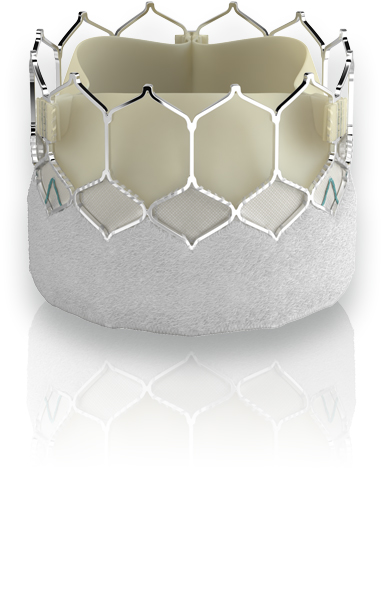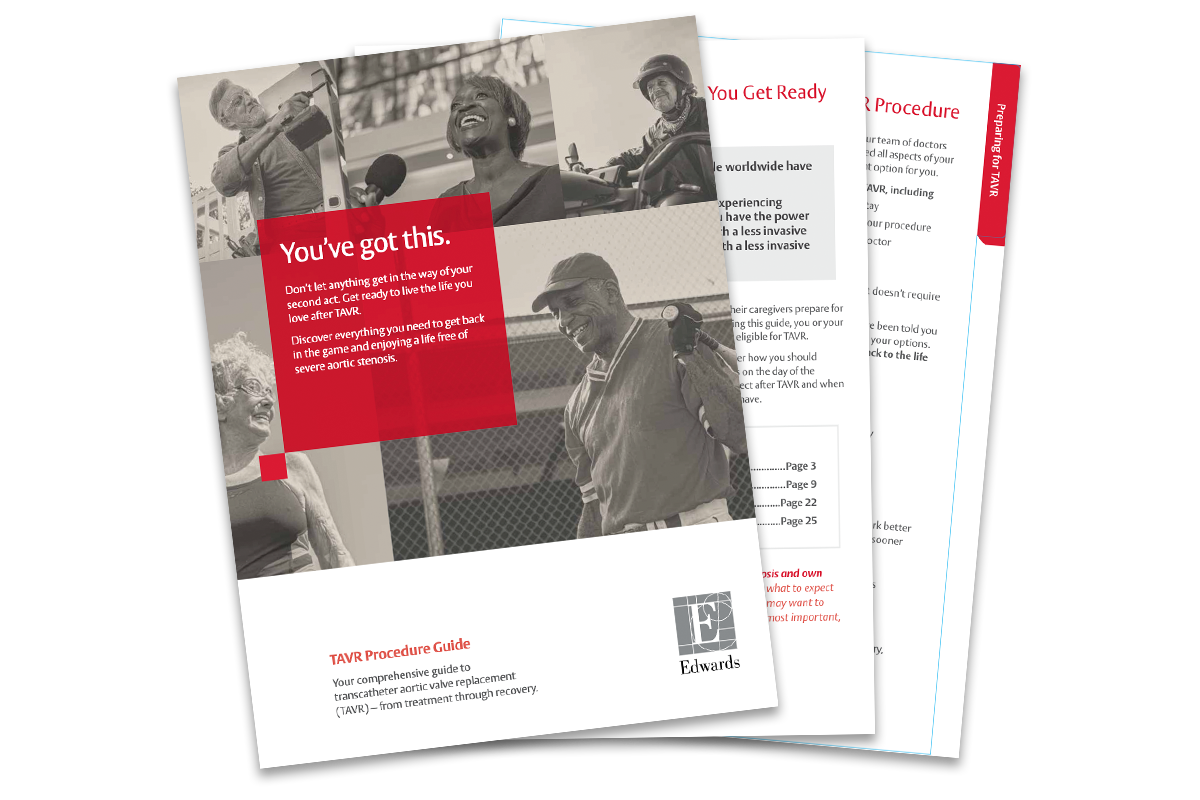Edwards TAVR
I’m Just Getting Started.
Nothing Will Stand in My Way With TAVR.
We know you want to be informed, empowered, and in control when making important decisions about treating your severe aortic stenosis. When it comes to choosing transcatheter aortic valve replacement (TAVR), or other treatment options, that means knowing which treatment option is best for you.
Put yourself in the driver’s seat of your health. Talk to your doctor about your valve options today.

TAVR is available to more people than ever before. Learn about the features unique to Edwards TAVR and why having an Edwards valve matters.1
Without aortic valve replacement, severe aortic stenosis is fatal. Luckily, you can experience a quicker recovery, a shorter hospital stay, and a faster return to activities with an Edwards TAVR valve, when compared to open heart surgery. Freedom from severe aortic stenosis means freedom to do more of what you love. Find out how an Edwards TAVR valve can help you get back to life quicker than open heart surgery.2


From an interactive discussion guide and helpful websites to TAVR brochures and procedure videos—there are many resources available to help you throughout your TAVR treatment journey. Discover the many resources available to you as you embrace the next act in life.
Explore Edwards TAVR valves and learn why they lead to better outcomes for patients.
References
1. The SAPIEN 3 and SAPIEN 3 Ultra valve are both commercially available in the United States. Your doctor will tell you which valve you will receive.
2. PARTNER 3 trial, low-risk cohort unadjusted clinical event rates, AT population.
Indications:
The Edwards SAPIEN 3, SAPIEN 3 Ultra and SAPIEN 3 Ultra RESILIA Transcatheter Heart Valve system is indicated for relief of aortic stenosis in patients with symptomatic heart disease due to severe native calcific aortic stenosis who are judged by a Heart Team, including a cardiac surgeon, to be appropriate for the transcatheter heart valve replacement therapy.
The Edwards SAPIEN 3, SAPIEN 3 Ultra and SAPIEN 3 Ultra RESILIA Transcatheter Heart Valve system is indicated for patients with symptomatic heart disease due to failing (stenosed, insufficient, or combined) of a surgical or transcatheter bioprosthetic aortic valve, a surgical bioprosthetic mitral valve, or a native mitral valve with an annuloplasty ring who are judged by a Heart Team, including a cardiac surgeon, to be at high or greater risk for open surgical therapy (i.e., predicted risk of surgical mortality ≥ 8% at 30 days, based on the Society of Thoracic Surgeons (STS) risk score and other clinical co-morbidities unmeasured by the STS risk calculator).
Contraindications (Who should not use):
The Edwards SAPIEN 3, Edwards SAPIEN 3 Ultra and SAPIEN 3 Ultra RESILIA Transcatheter Heart Valve System should not be used in patients who:
Warnings:
Precautions:
The long-term durability of the Edwards SAPIEN 3 Ultra, SAPIEN 3 Ultra RESILIA and SAPIEN 3 transcatheter heart valves are not known at this time. Regular medical follow-up is recommended to evaluate how well a patient’s heart valve is performing. Limited clinical data are available for transcatheter aortic valve replacement in patients who are born with an aortic heart valve that has only two leaflets and who are determined to be at low risk for open heart surgery. A patient’s anatomical characteristics should be considered by their physicians when using the valve in this patient population. In addition, patient age should be considered as long-term durability of the valve has not been established. Patients who need a dental procedure should talk to their doctor about risk of infection and needing antibiotics. Patients should be treated post-procedure for heart infection as a precaution.
The safety and effectiveness of the transcatheter heart valves are also not known for patients who have:
Potential risks associated with the procedure include:
Additional potential risks specifically associated with the use of the heart valves include:
CAUTION: Federal (United States) law restricts these devices to sale by or on the order of a physician.